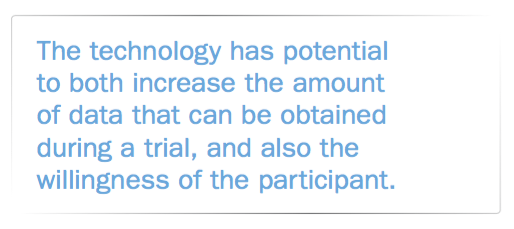Engaging Patients & Clinicians: Lessons from the PALM Registry
Applied Clinical Trials
Case study evaluates the use of a mobile device tool for simplifying clinical trial patient enrollment and data collection.

Disruptive technologies hold great promise in expediting clinical development, including the engagement of patients and physicians in clinical trials. This article describes a study to evaluate lipid management in clinical practice, using a novel mobile device developed by the Duke Clinical Research Institute (DCRI) for simplified patient enrollment and data collection.
The DCRI’s Prospective Assessment of Lipid Management (PALM) registry involves 175 U.S. sites and 7,500 patients, including subjects with cardiovascular risk factors warranting consideration of lipid-lowering therapies and those already on statin therapy.1 The registry was developed in response to a change in the American College of Cardiology/American Heart Association guideline recommendations for cholesterol management in 2013.
The PALM registry collects data on current practice patterns, patient experiences, and patient and provider knowledge and attitudes to lipid management and the reduction of cardiovascular disease risk. This information will be used to design and implement effective lipid-lowering treatment strategies for cardiovascular risk reduction.
Enrollment using a tablet-based app
The DCRI developed a tablet-based application that allows for all parts of registry enrollment and patient-reported outcomes (PROs) collection using a single PALM iPad app. This offers a unique approach to screening, consent and patient surveys. Clinical study coordinators use the tablet to identify eligible patients, and participants use it to complete patient surveys. This eliminates paper entries and enables secure and higher-quality data collection.
The app offers study participants the option of video informed consent (e-consent), in a format designed to promote understanding of and interest in the registry. In addition, the digital platform accommodates advanced survey methodology, including adaptive logic, embedded randomization of questions, and
The PALM Registry: Overview

sophisticated response categories (see Table 1 at left for more details on the PALM Registry; click box to enlarge). The survey-which is being used with all PALM registry patients and sites-was randomized so that each participant was given one of six sets of questions. Question pathways are also adapted based on answers provided by the user, allowing for in-depth exploration of specific subgroups. In addition to the patient survey, key components of the study include provider surveys, medical record abstraction, and core lab lipid panels.
The app was designed to fit into the workflow of busy clinics, taking advantage of “downtime,” enabling enrollment during the patient’s clinic visit, and enabling direct, paperless data entry. The technology is designed to be user-friendly, portable, readable, and enticing, while also being institutional review board (IRB)-compliant and secure. The app streamlines the consent process and makes it more interactive, allowing for sophisticated capture of PROs, and decreasing the burden on trial participants.
A traditional informed consent form was transformed into a series of customizable video modules following upfront collaboration with the IRB. The modules cover essential materials but add a human face, are easy to view and understand, and can be adapted for use in multiple languages. The route to informed consent is “game-ified” to promote completion. The patient’s signature is captured electronically, in compliance with IRB requirements.
The PALM registry is one of the first to operationalize across a large number of sites, some of which were very experienced in research, while others were relative novices. Interestingly, recruitment to the PALM registry via the app progressed significantly faster than expected, calling for real-time revisions to the projected rate (see Figure 1). Multiple iterations of the app were developed across multiple sites without interrupting enrollment.

Challenges in application development
Specific challenges faced in developing the PALM app centered on the fact that this was the first of its kind to be released, as a largely de novo application, with timelines not fully defined or understood. As a result, the initial release lacked some polish. A small number of bugs and errors remained, so not all data were committed to the database, there were some crashes related to specific data entry, and the survey contained some errors. Duplication of patient IDs occurred within a site, and the back-end data lacked well-defined specifications.
The text consent element also posed challenges, including version control, due to the fact that any changes require a new consent document to be loaded, leading to a time lag due to the need for staff availability to complete this task. In addition, sites must log out and log back in to see any changes that have been made. Since this is such a new area, the IRB was not fully familiar with the formatting requirements to support e-document conversion, and research personnel are required to be present throughout. Text consent also lacks the element of engagement and innovation found in some other approaches.
Video consent, while engaging and innovative, requires a time- and resource-intensive process to create the video. Existing boilerplate language, which can be cumbersome, must be used, since there is no approved alternative. In addition, the finished video cannot be customized beyond providing site contact information.
Obtaining consent on tablets is also not without challenges, such as the difficulty of understanding how the consent modules, document, and web application programming interface (API) work together, how the

finished material will look, and what can and cannot be modified. Once this method has been selected, no alternative can be offered-the patient has to use the tablet. The approach is also not adaptable to the use of additional documents or a varied signature process. Once the patient has completed the consent process, tapping “continue” without confirming receipt of the consent document can result in no copy remaining for the patient or for site records. Also, it is not possible to verify consent after the fact.
Elements to address before device implementation
Challenges before implementation of the device include the need to complete preliminary paperwork to obtain IRB approval, including providing details on data security and plans for IT integration with local software systems. There may also be restrictions on the use of devices not owned by the local system, including connection to any non-guest network, loading email accounts or connecting to printers via Wi-Fi.
During revised implementation of the PALM app, staff from the DCRI set up devices on the Duke Wi-Fi system; now the device pulls down the app with video and consent documents, and iBook content. The site is sent preloaded devices, and DCRI staff conducted activation calls, offering assistance to the site to add email and/or printer connections, and training to use the app. This approach has proven to be effective, but time-consuming, adding around 150 hours of work for staff.
Device management software was a key factor in this project’s success, allowing for real-time control of all mobile devices deployed for the study. Features included:
- Protection of security, including control of updates; approval and delivery of content, including newsletters, copies of protocols and digital aids for study coordinators; authorization of users and their levels of access; and offering the ability to “brick” the device, or render it useless.
- Ability to monitor exactly when enrollment occurred and who was enrolling the patients.
- Controlling multiple aspects of the study in real time, including the ability to rapidly identify problem areas and triage as needed.
As with any other study, this one was not without hiccups, including minor issues involving understanding the software, interactions with other institution software, iOS updates, and the need to target updates for specific devices-there were 350 in total-rather than for all devices involved in the study.
When the PALM app was deployed in the field, major upgrades were incorporated to improve the overall look and feel, and add polish. Minor changes were made to fix bugs. The revised version was tested by IT and site management teams, and initial deployments were made simultaneously to DCRI and site devices. DCRI staff reported successful deployment when connected to the Duke network, and the majority of the time when connected to their home network.
Downstream effects have been some issues with data reconciliation, including duplicate patient IDs, records captured electronically and in the laboratory database that do not match with those in the survey database, and missing records in the survey database. The fact that some sites did not keep copies of signed consent forms meant that certain patient data had to be discarded. However, use of the patient label assigned by the site during screening enabled linking of some records that otherwise would have been orphaned.
Lessons learned
The PALM registry builds on earlier work by the DCRI to validate a national stroke registry and quality improvement programs, known as Get With The Guidelines (GWTG)-Stroke2 and Target: Stroke Phase I;3 on examinations of the regulatory and ethical considerations that arise from the use of registry data for research;4 and on the linking of registry data with claims data.5 6
Initial feedback on the technology has been extremely positive, allowing the DCRI to expand its reach and

receive as well as distribute data, input and findings into new areas, populations, and clinics. Patients up to 99 years old and across educational backgrounds were able to successfully navigate the consent process and tablet-based survey. The technology has potential to both increase the amount of data that can be obtained during a trial, and also the willingness of the participant.
Learnings from the implementation of the PALM app include the importance of accurate estimations of timelines and costs of app development. This experience also confirmed the importance and safety of cloud storage, confirmation of data transmission, and other safeguards to protect data integrity and optimize site performance. There is a need to increase the flexibility and adaptability of consent content and processes, and to take account of the marked variations between Wi-Fi systems.
In the future, benefits could be gained by:
- Involving data analysts and programmers from the beginning, to obtain their input on database structure.
- Broadening the questions asked during the feasibility phase of site recruitment, to include information on Wi-Fi systems and device policies.
- Pre-loading Duke-owned devices or deploying an app store for use with site-owned devices.
- Focusing on site education, to ensure an understanding of the limitations of electronic approaches, and to reinforce proper consent and record retention procedures.
- Broadening network testing requirements to include external site networks.
- Identifying considerations unique to mobile device use in research and compiling a repository or checklist of these factors.
- Establishing partnerships to benefit from the expertise of internal and external entities.
Vincent Miller is Project Coordinator, Duke Clinical Research Institute (DCRI); email: vincent.miller@duke.edu
References
1. Navar AM, Wang TY, Goldberg AC, et al. Design and rationale for the Patient and Provider Assessment of Lipid Management (PALM) registry. American Heart Journal. 170(5):865-871.
2. Xian Y, Fonarow GC, Reeves MJ, et al. Data quality in the American Heart Association Get With The Guidelines-Stroke (GWTG-Stroke): Results from a National Data Validation Audit. American Heart Journal. 163(3):392-398.e391.
3. Xian Y, Xu H, Lytle B, et al. Use of Strategies to Improve Door-to-Needle Times With Tissue-Type Plasminogen Activator in Acute Ischemic Stroke in Clinical Practice: Findings from Target: Stroke. Circ Cardiovasc Qual Outcomes. 2017;10(1).
4. Dokholyan RS, Muhlbaier LH, Falletta JM, et al. Regulatory and ethical considerations for linking clinical and administrative databases. Am Heart J. 2009;157(6):971-982.
5. Brennan JM, Peterson ED, Messenger JC, et al. Linking the National Cardiovascular Data Registry CathPCI Registry with Medicare claims data: validation of a longitudinal cohort of elderly patients undergoing cardiac catheterization. Circ Cardiovasc Qual Outcomes. 2012;5(1):134-140.
6. Mudrick DW, Shah BR, McCoy LA, et al. Patterns of stress testing and diagnostic catheterization after coronary stenting in 250 350 medicare beneficiaries. Circ Cardiovasc Imaging. 2013;6(1):11-19.
